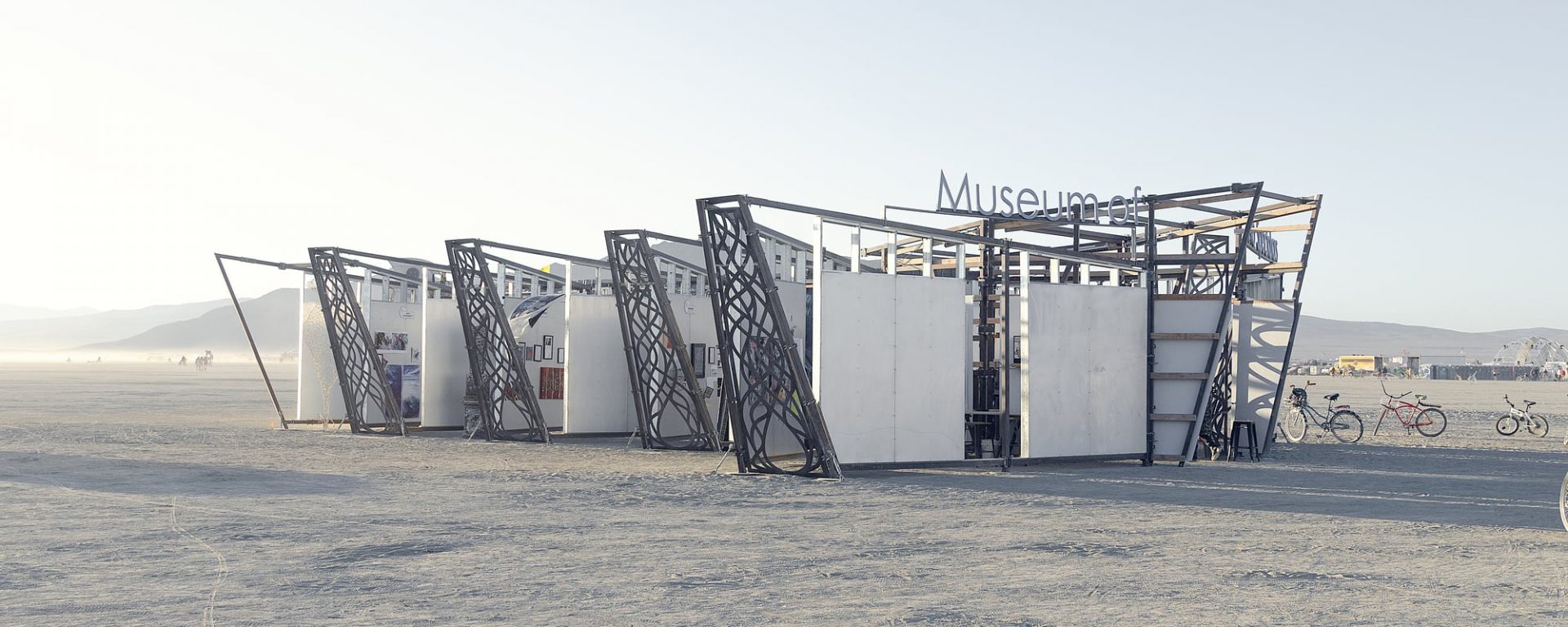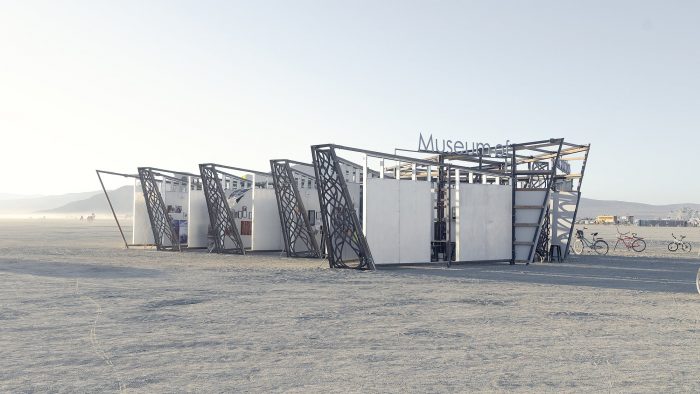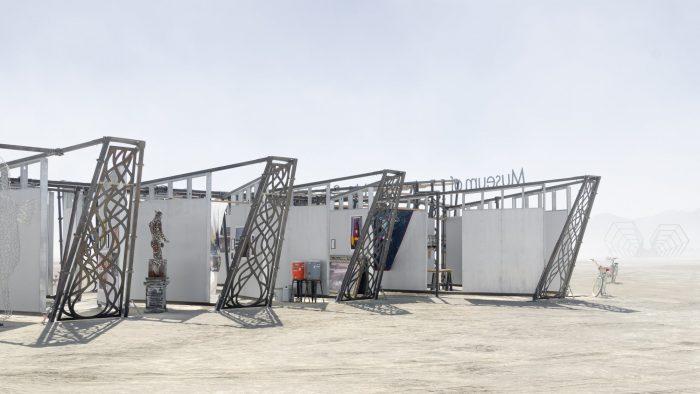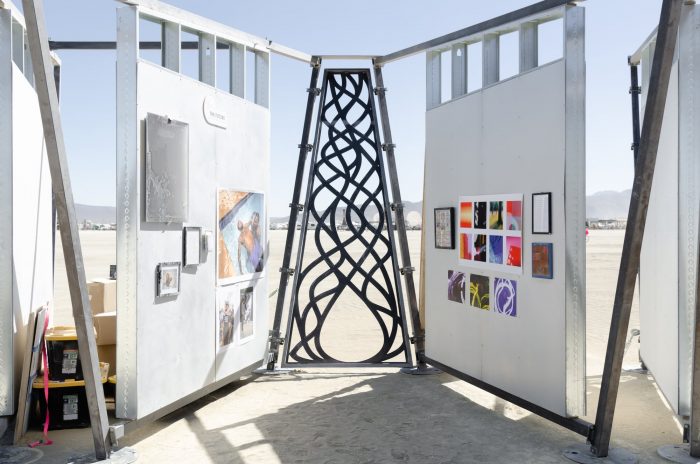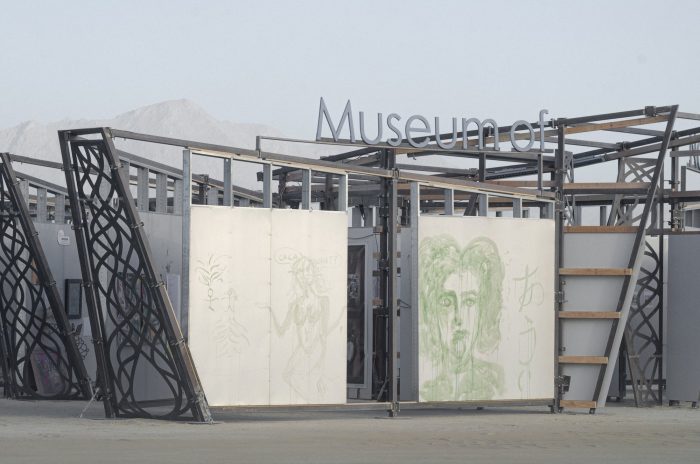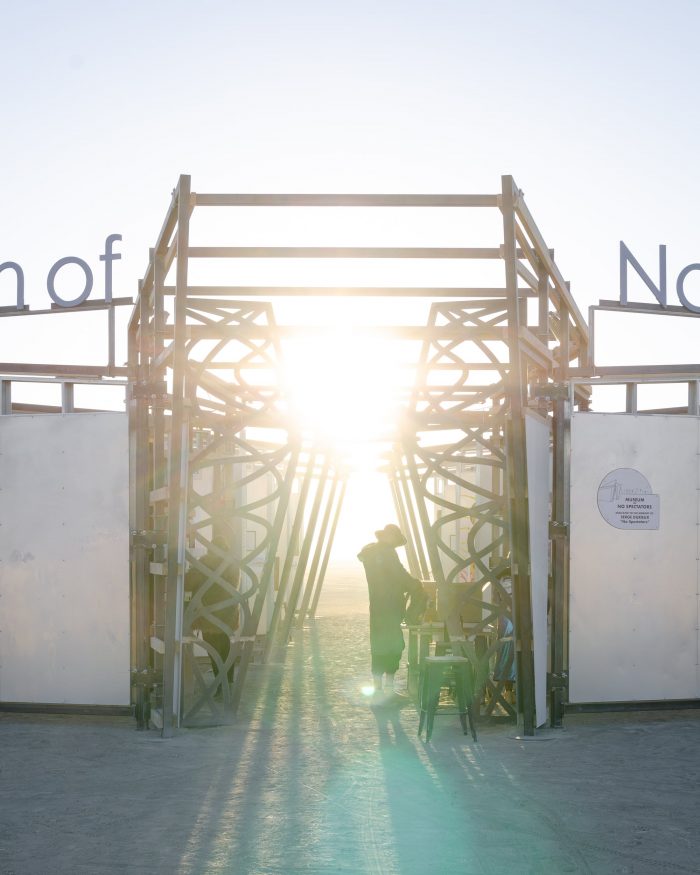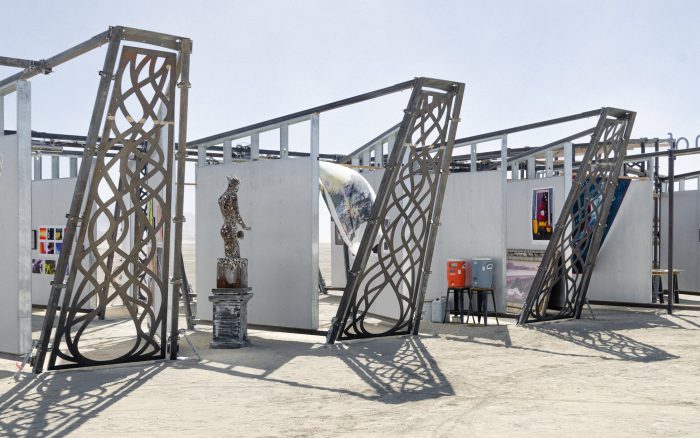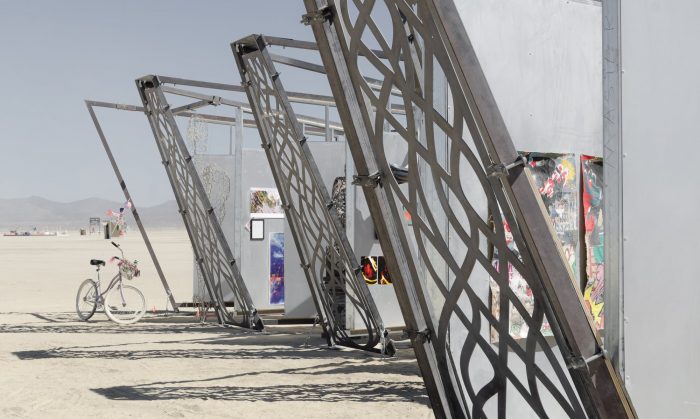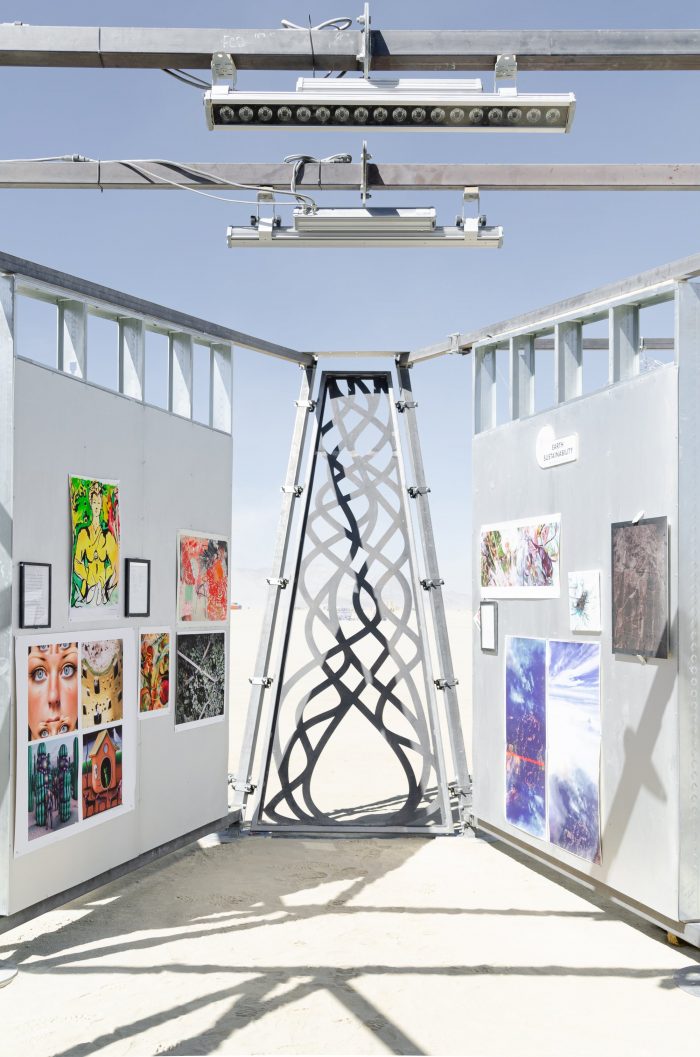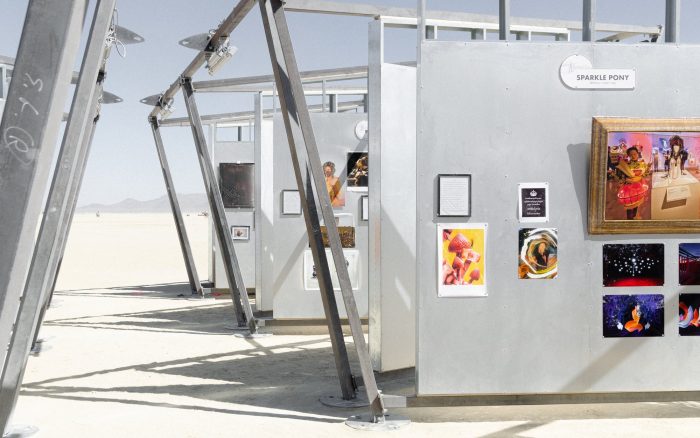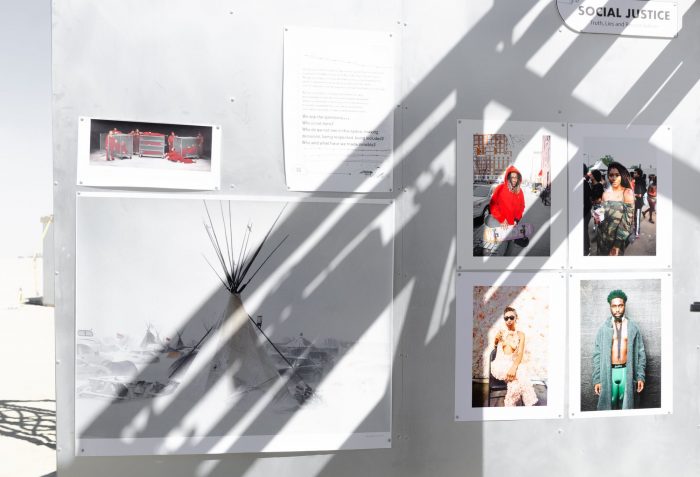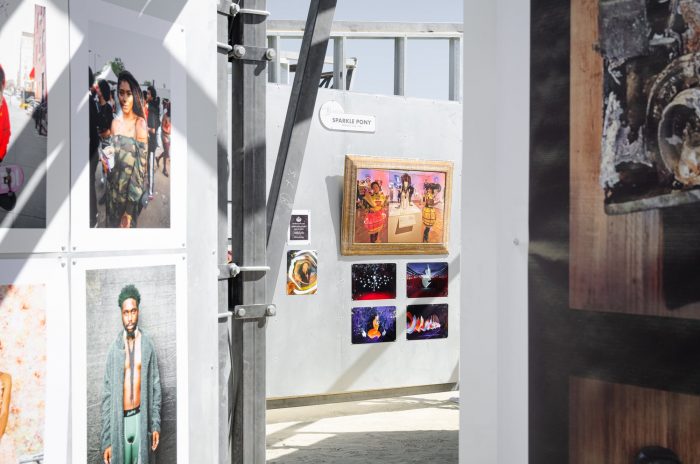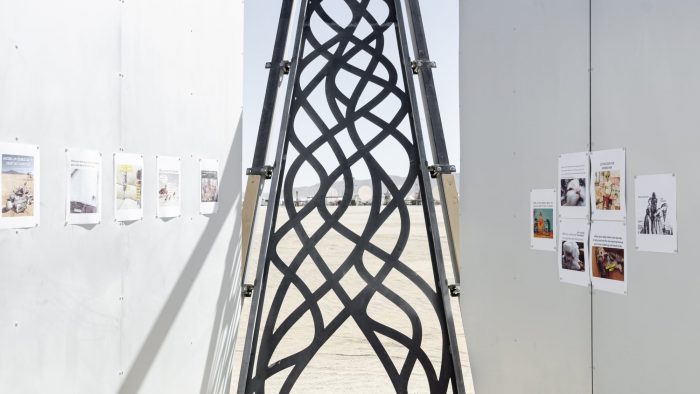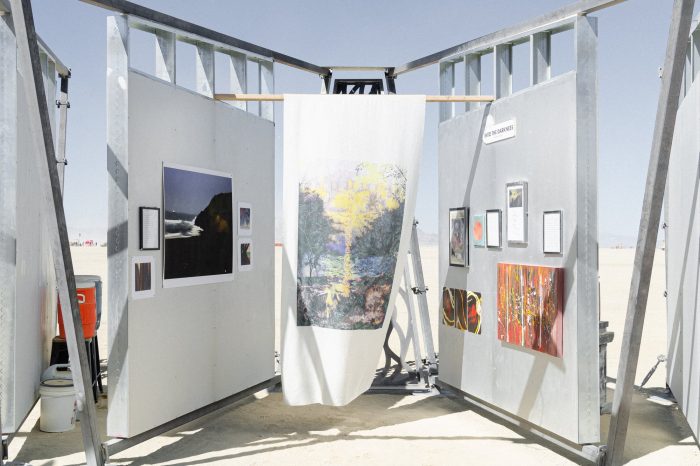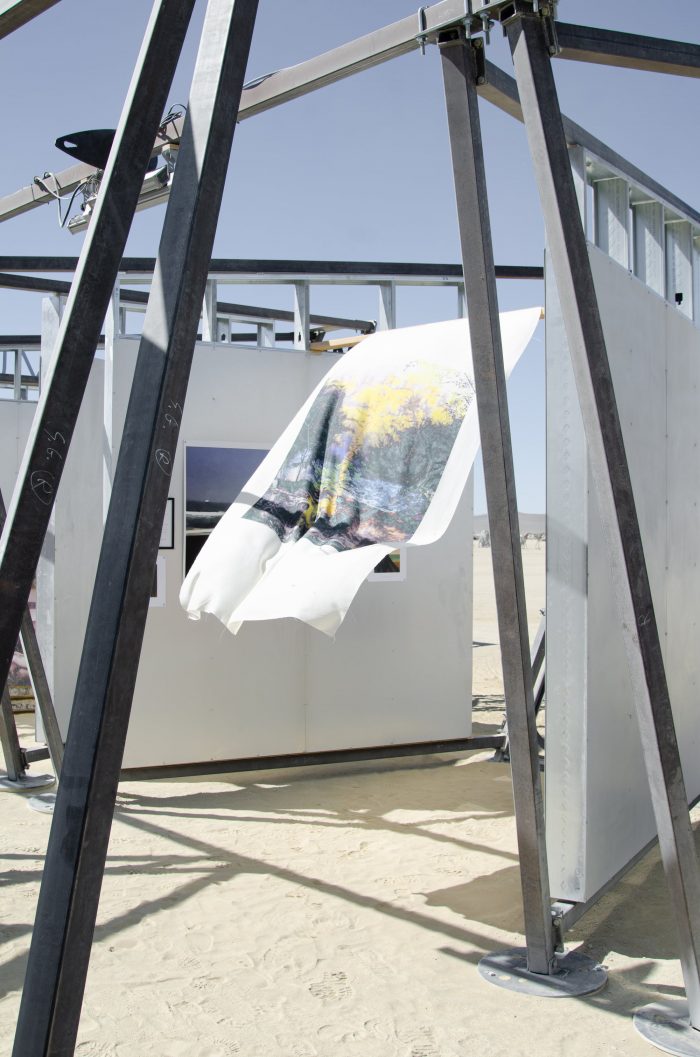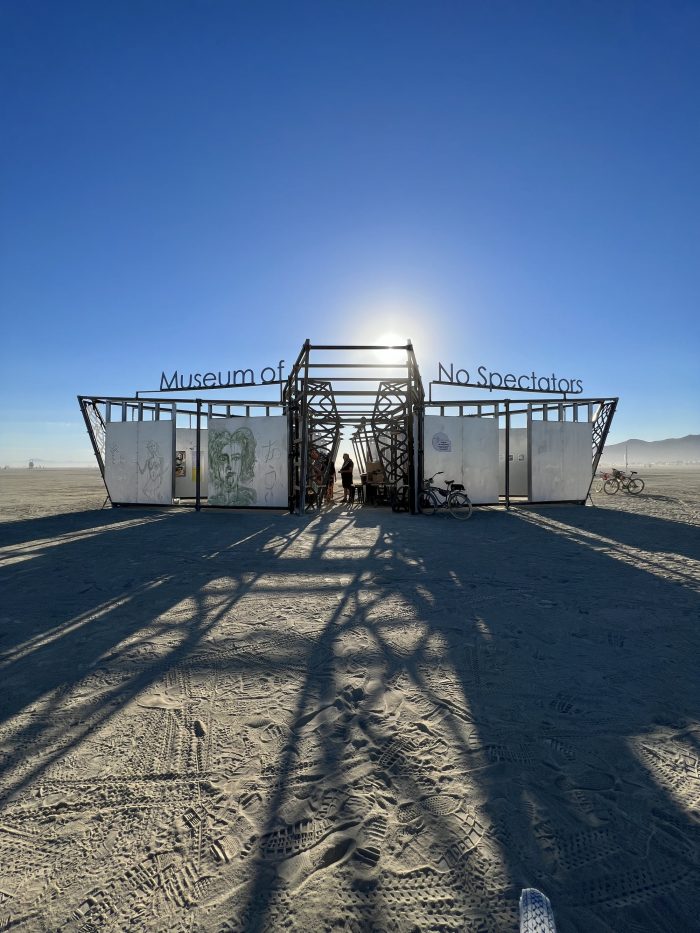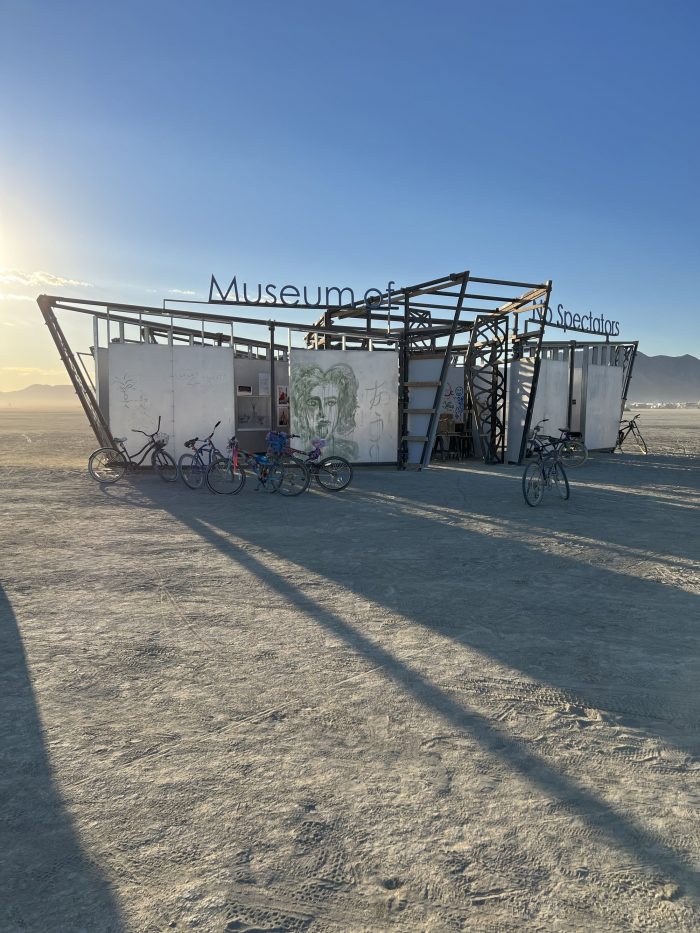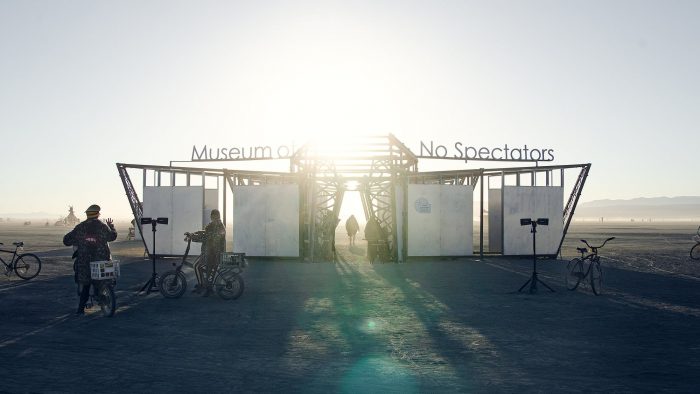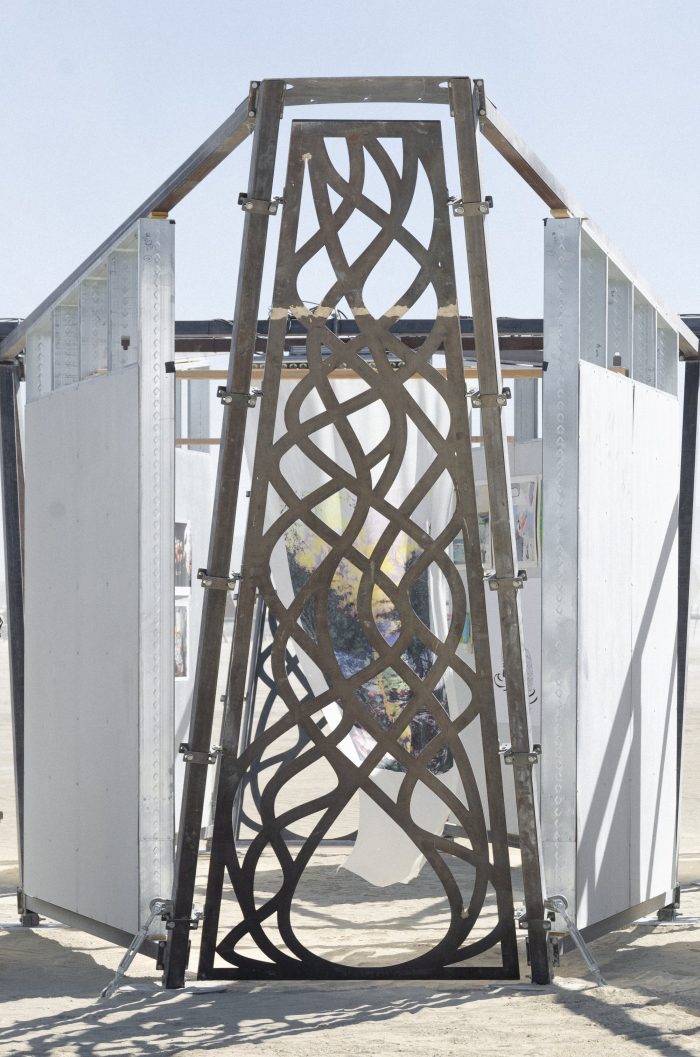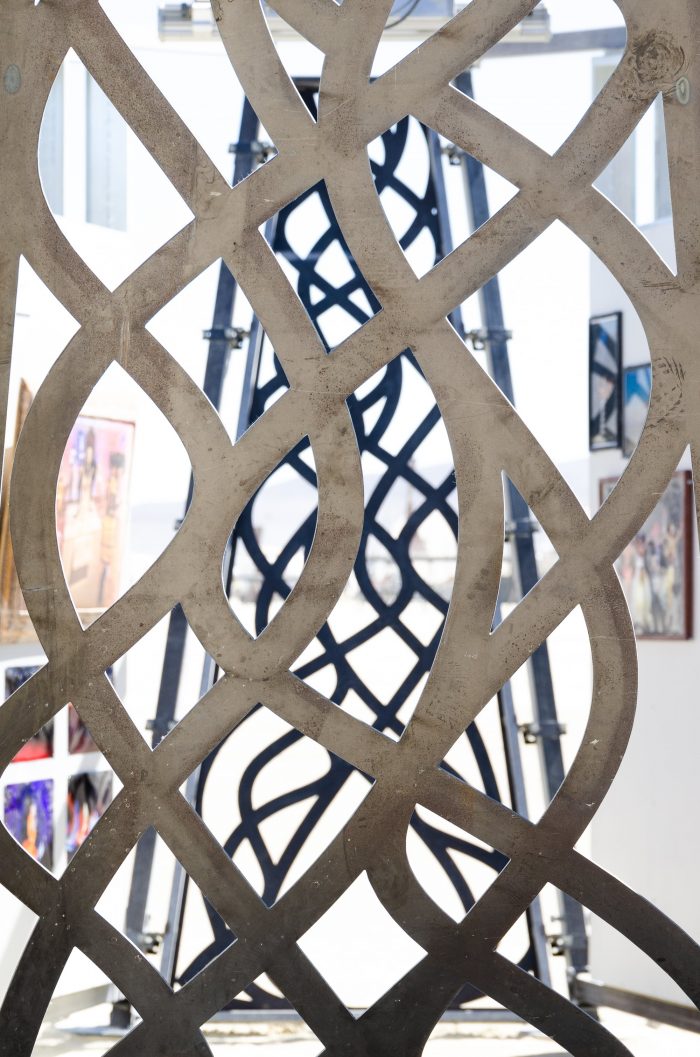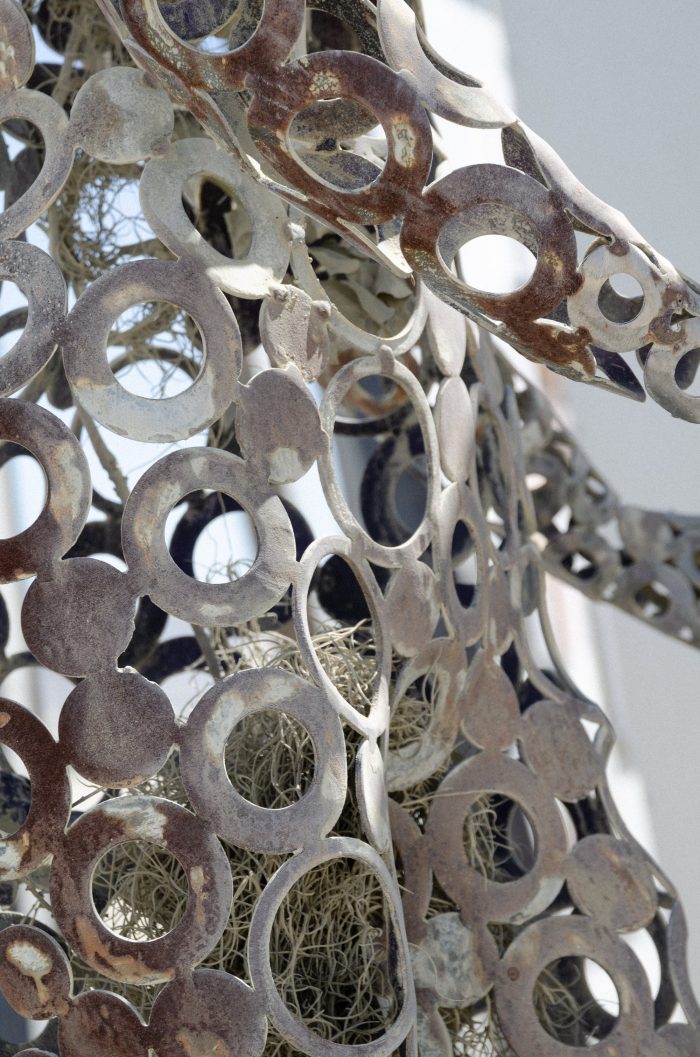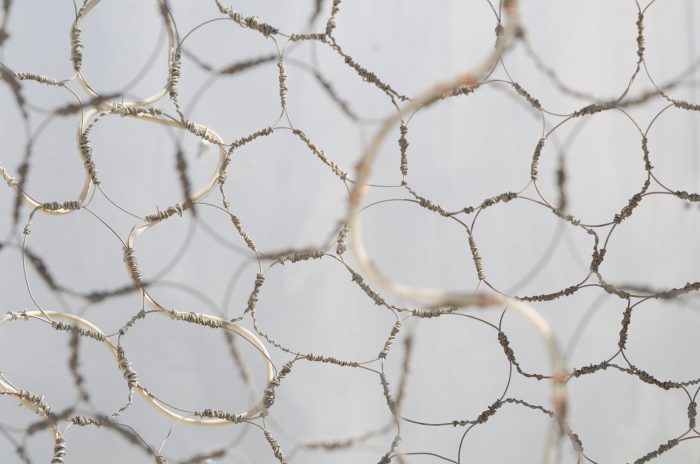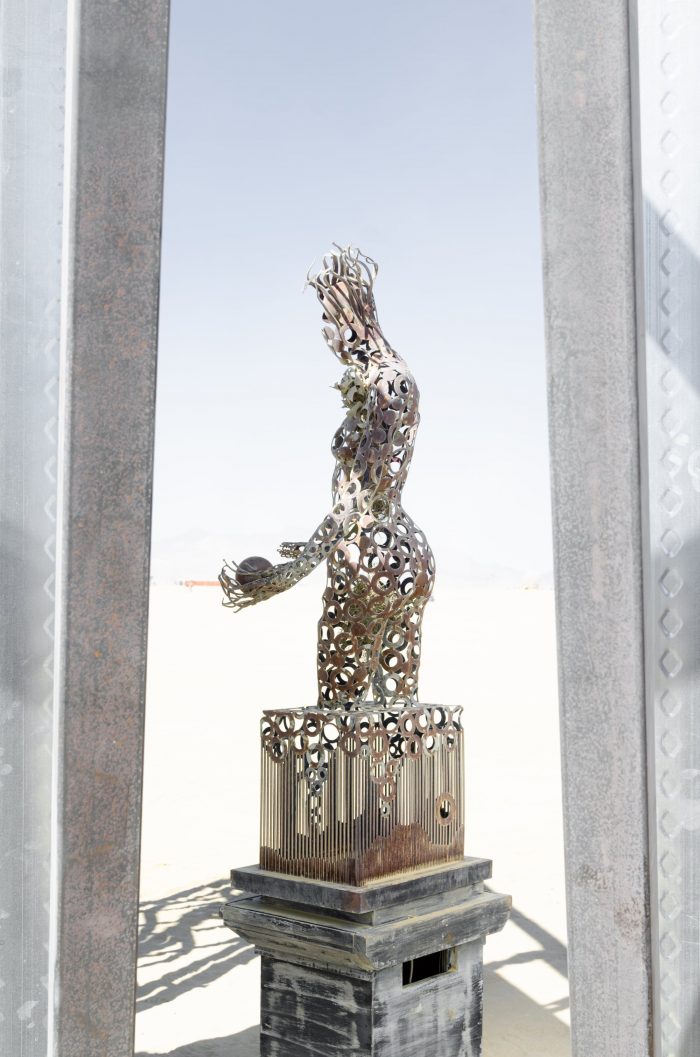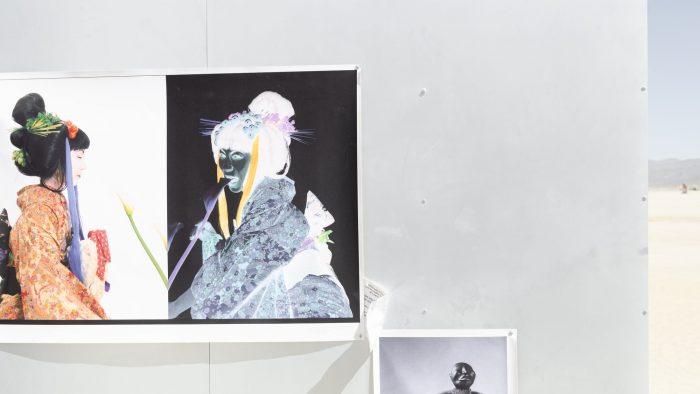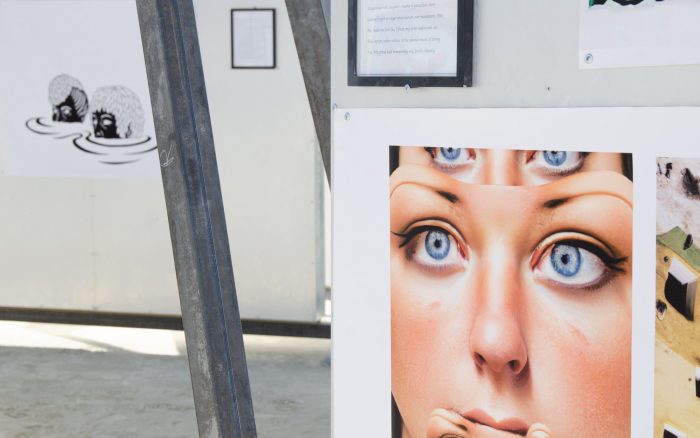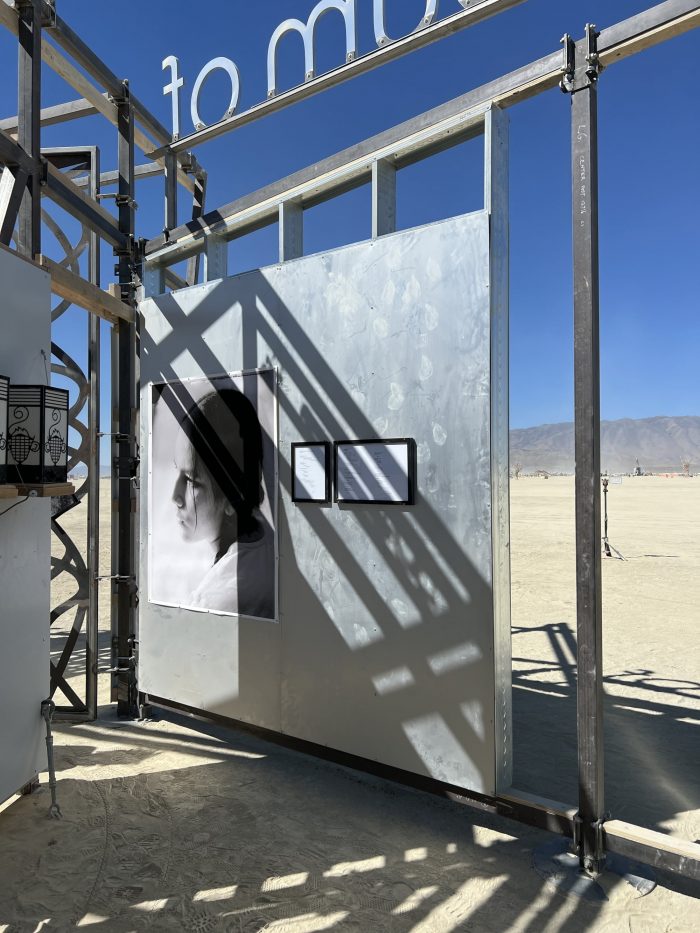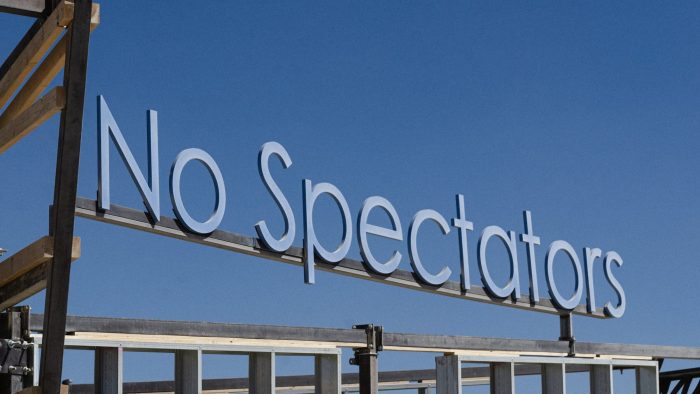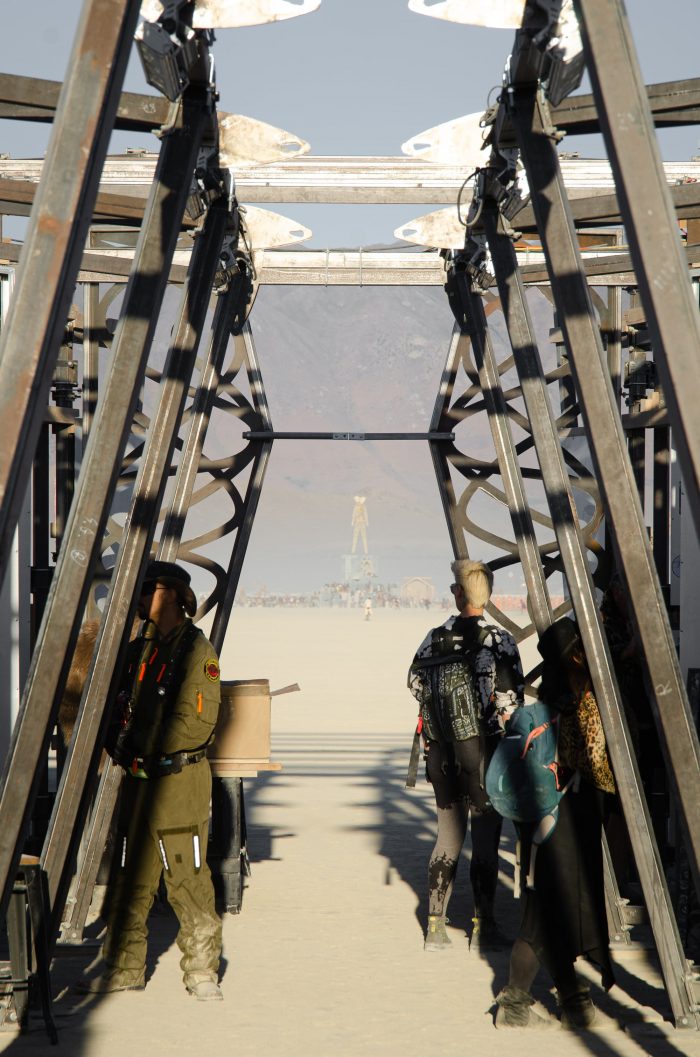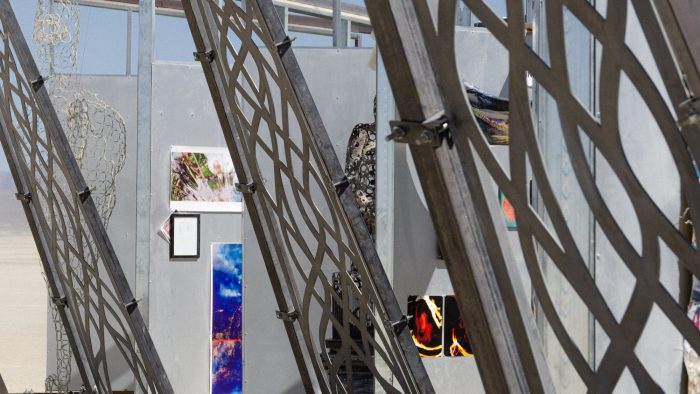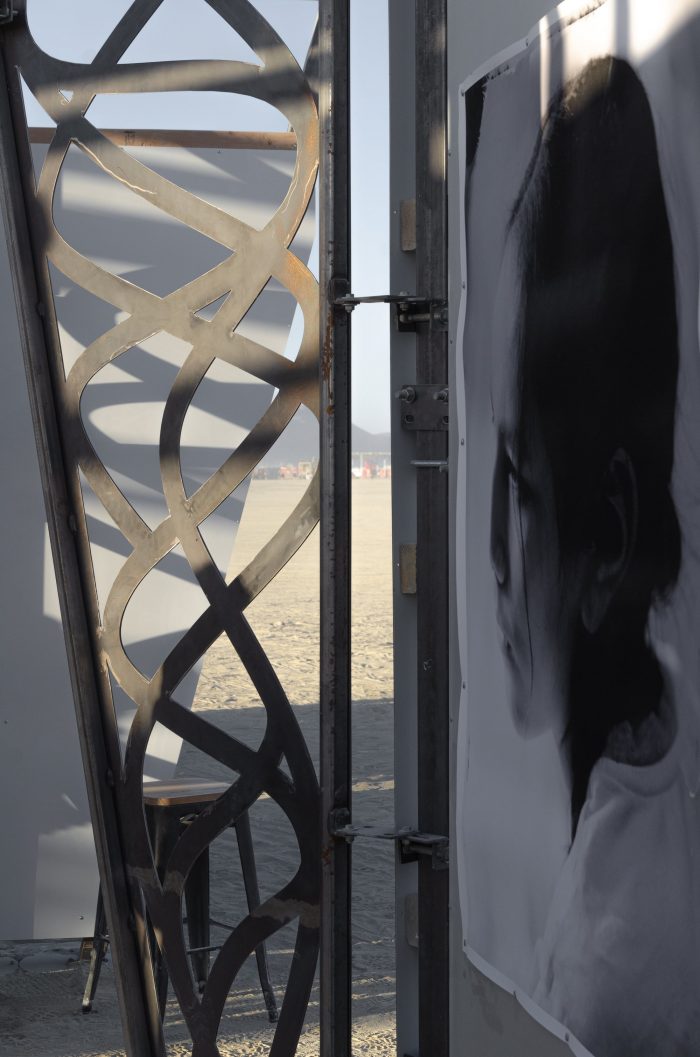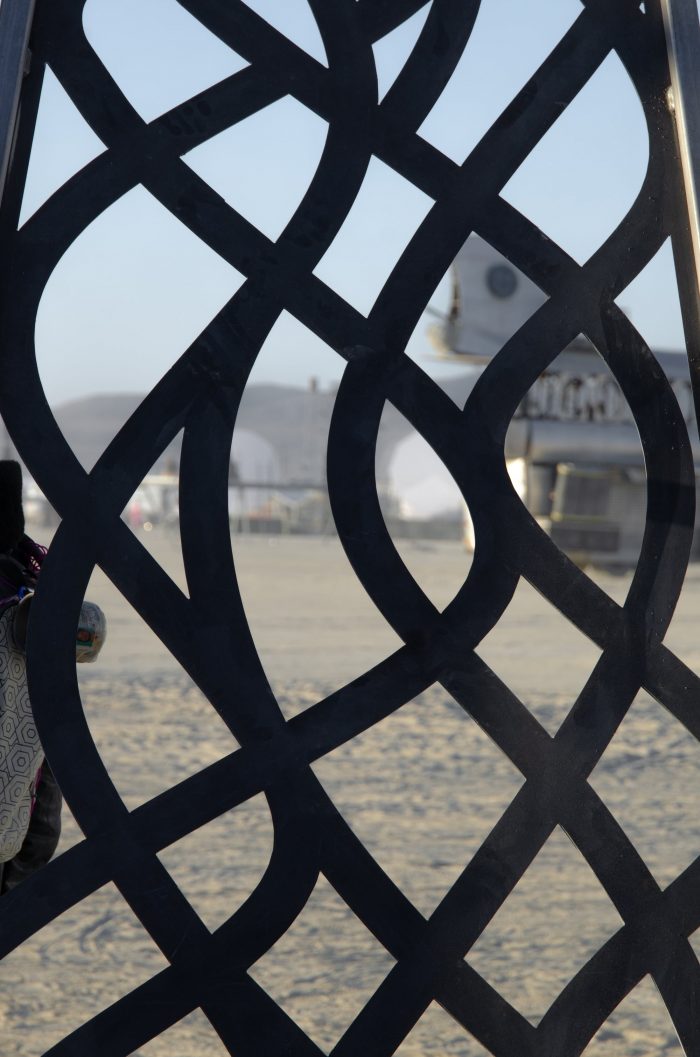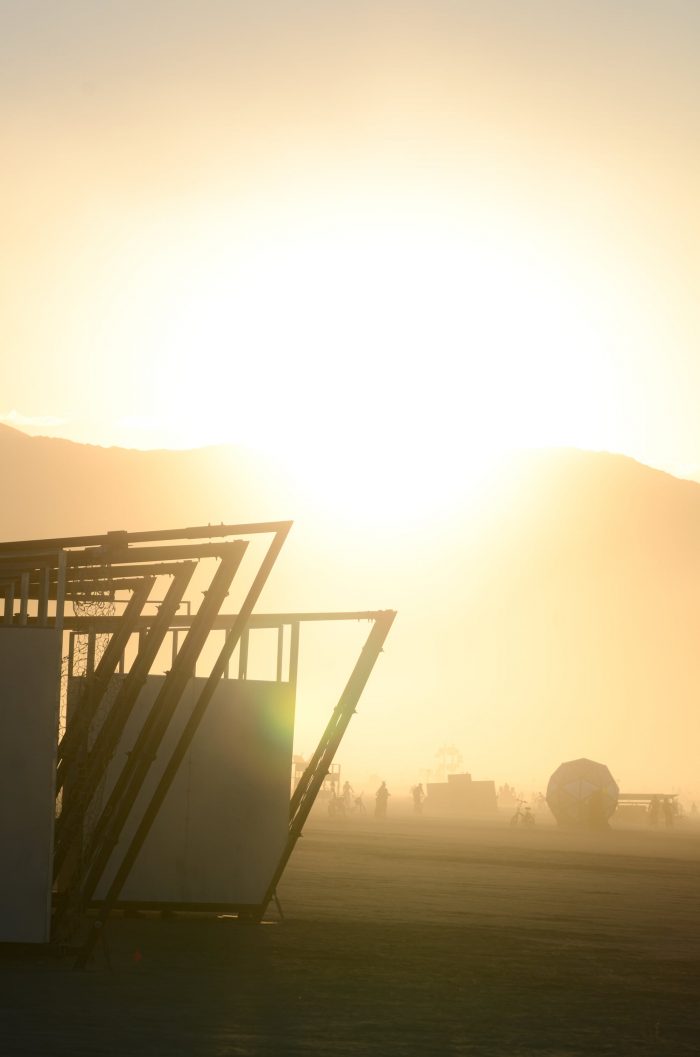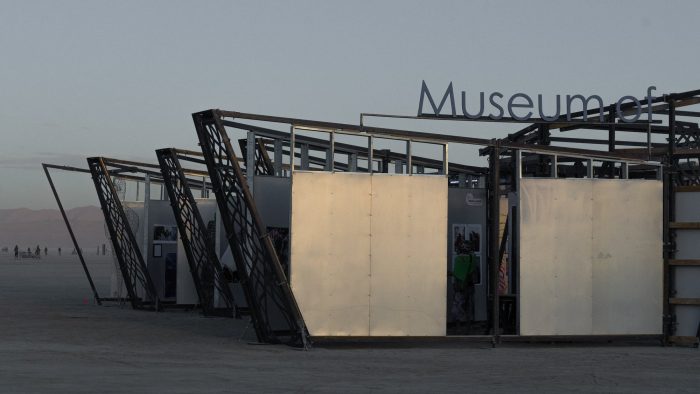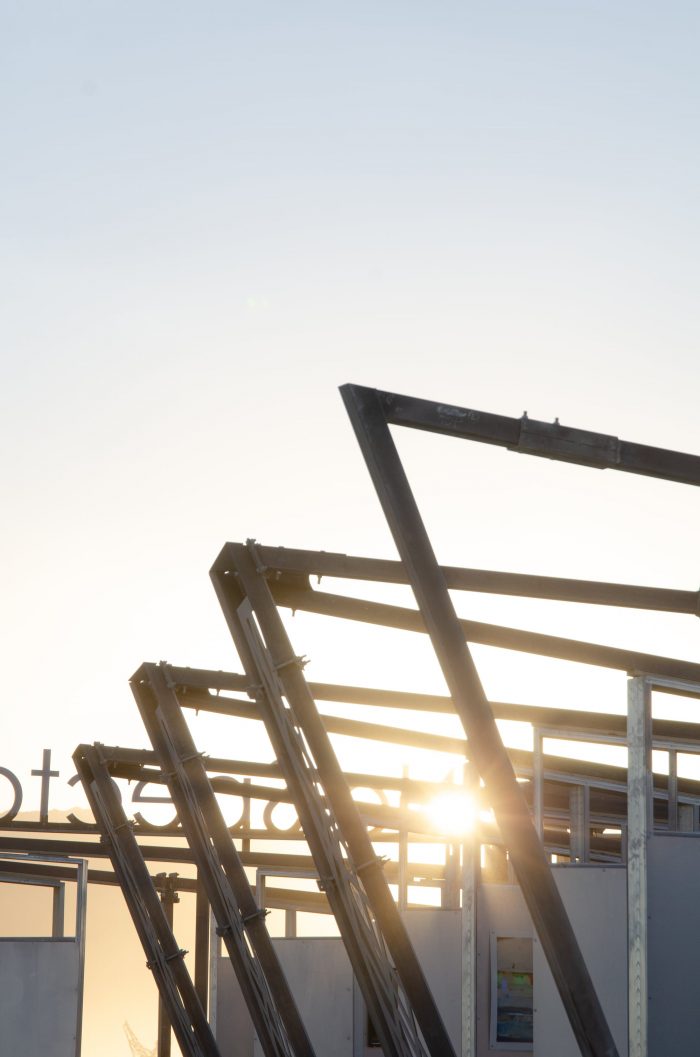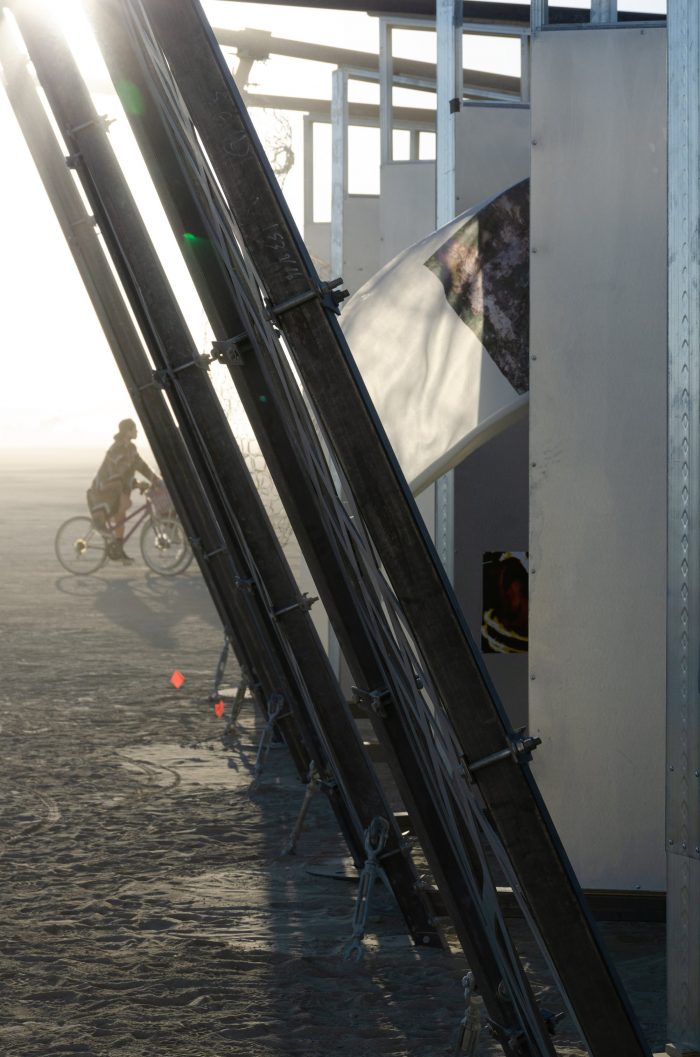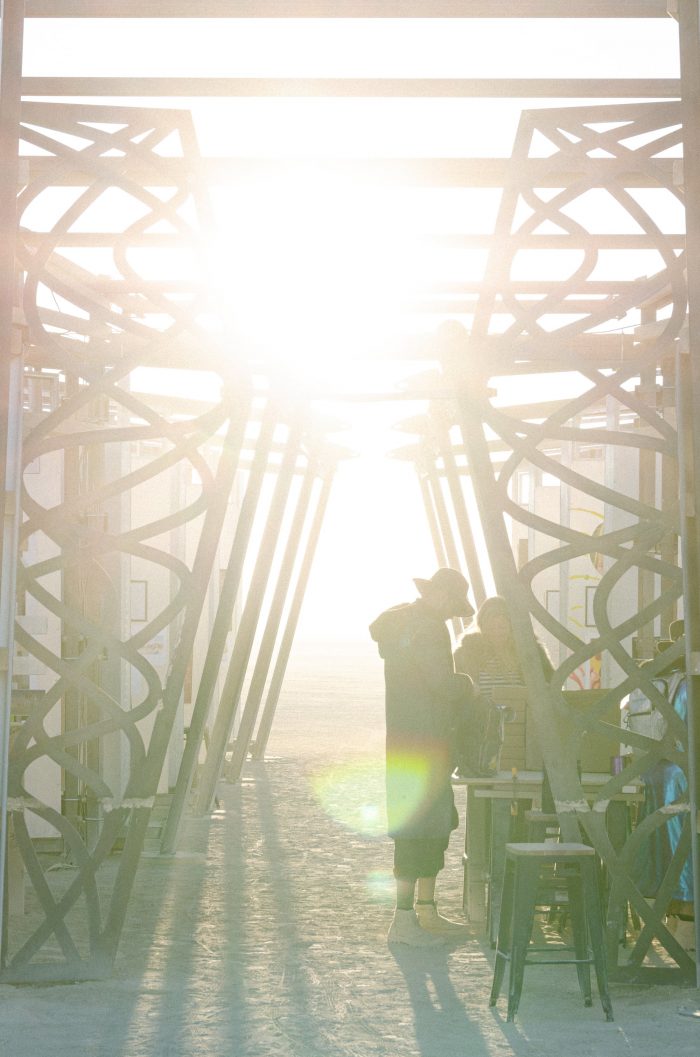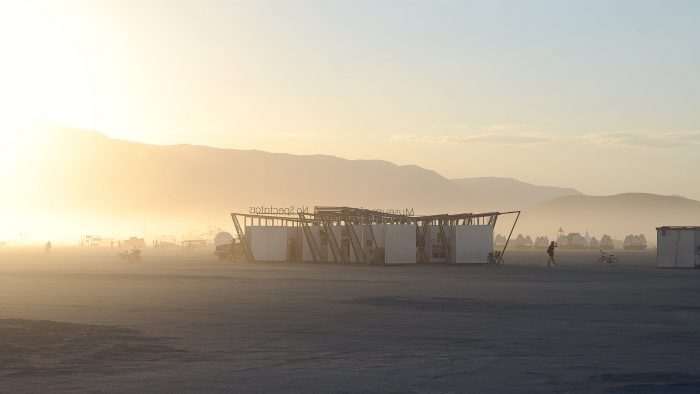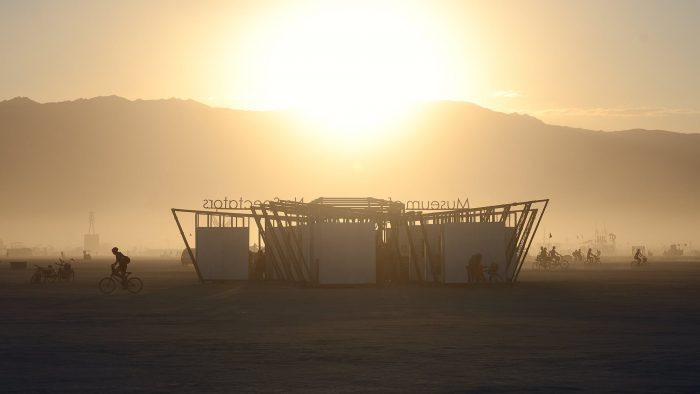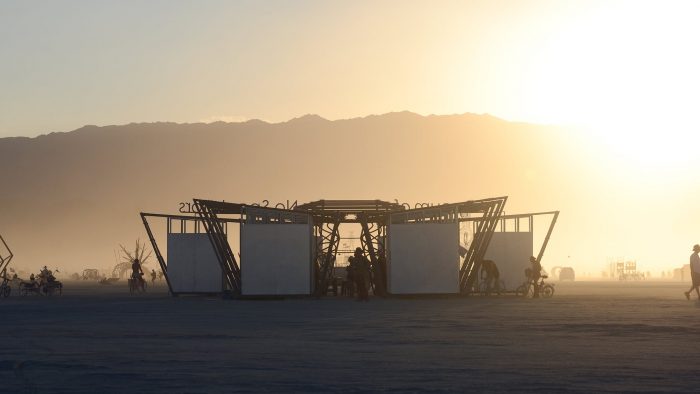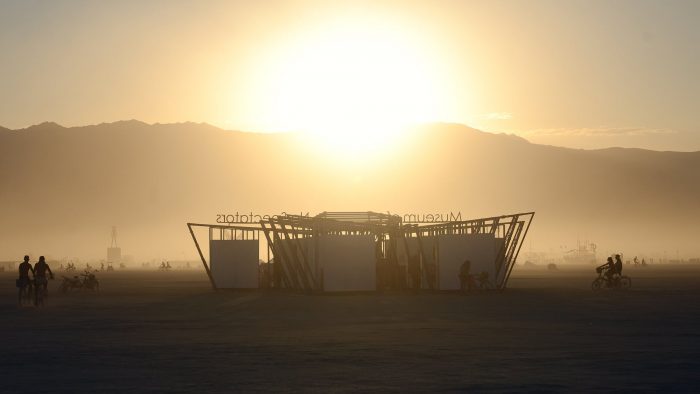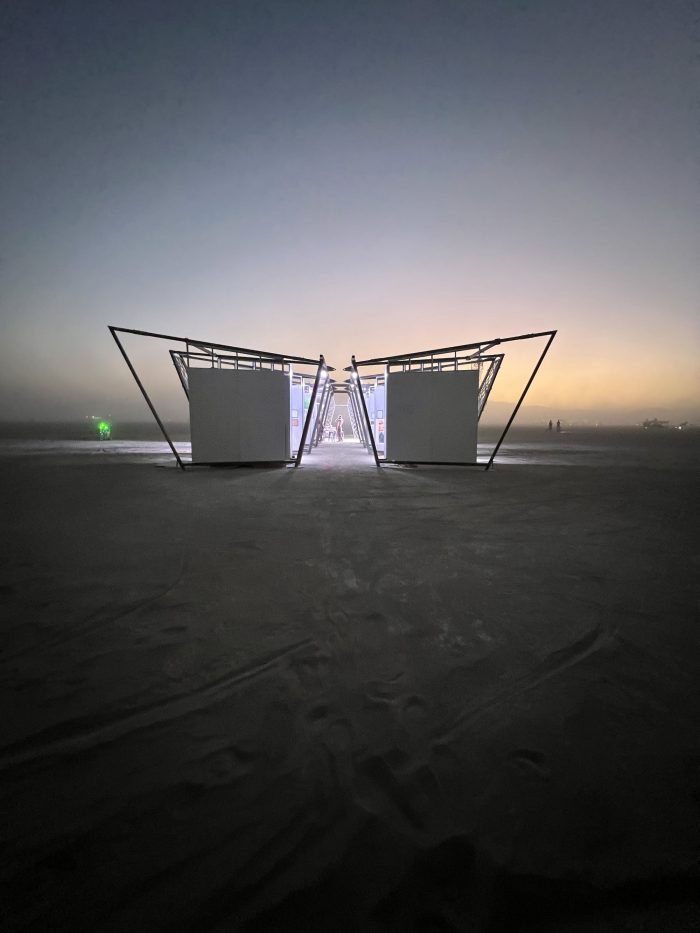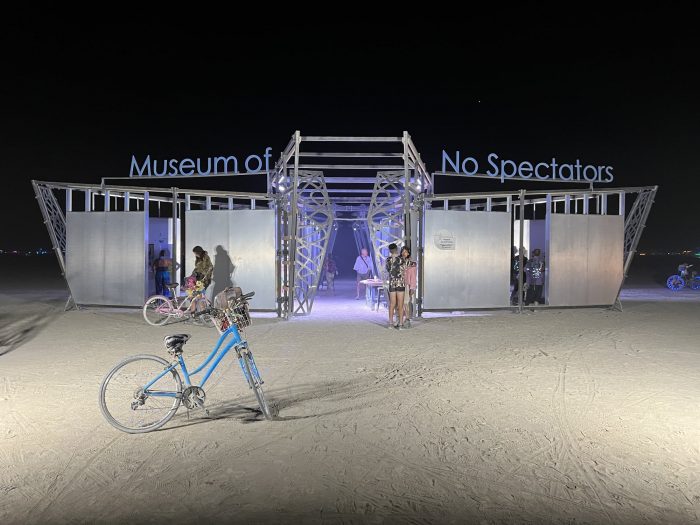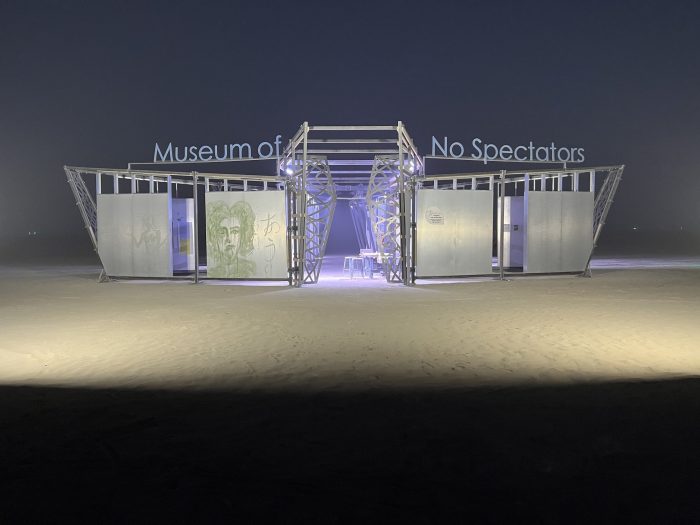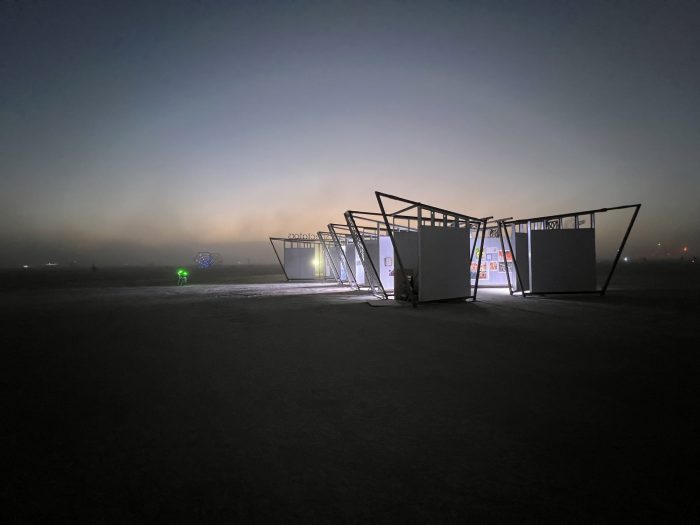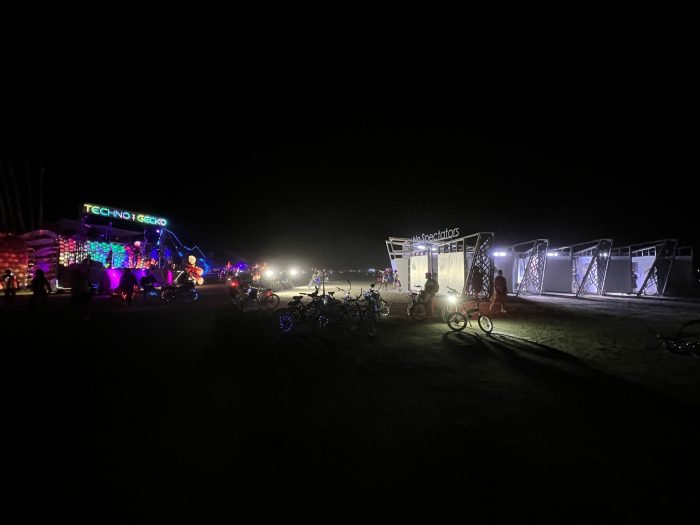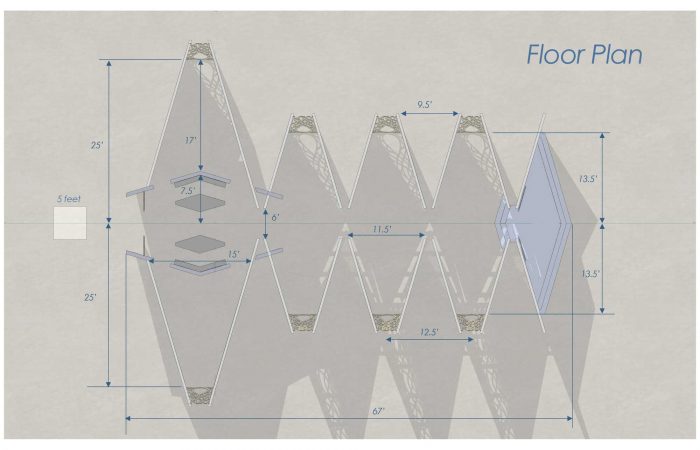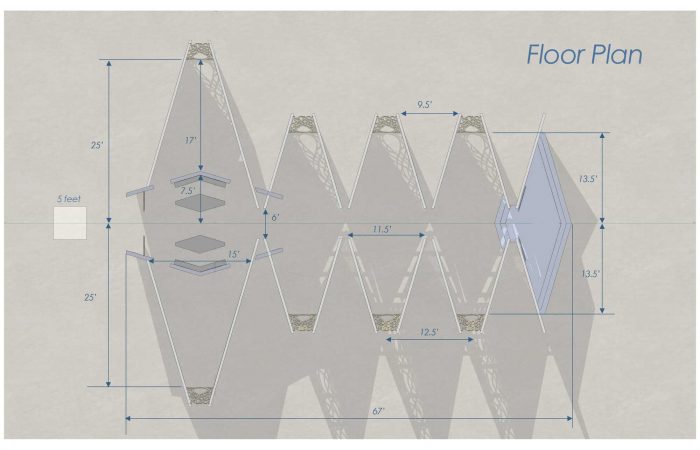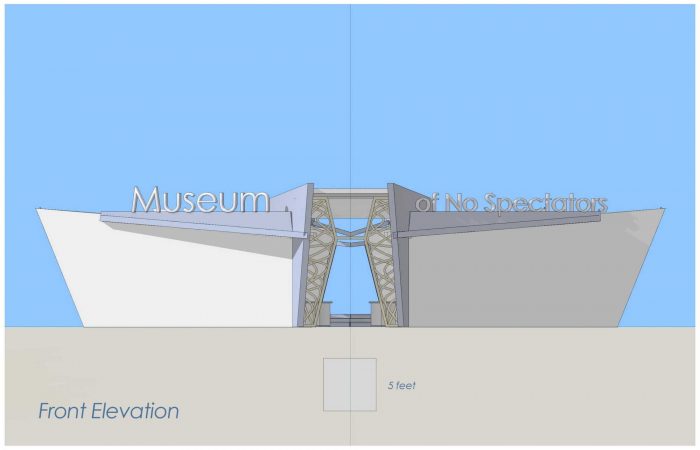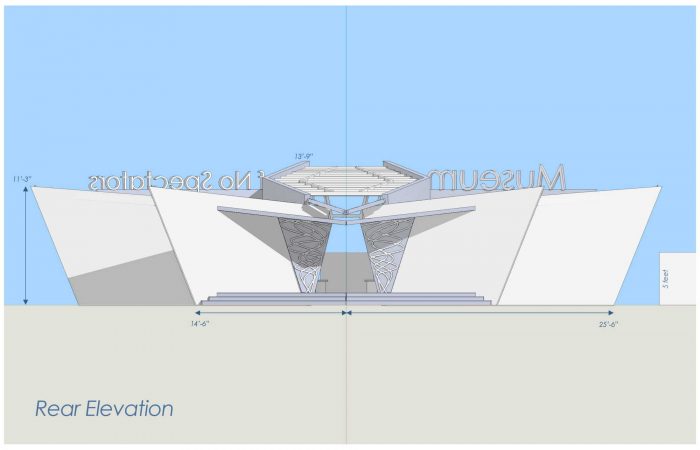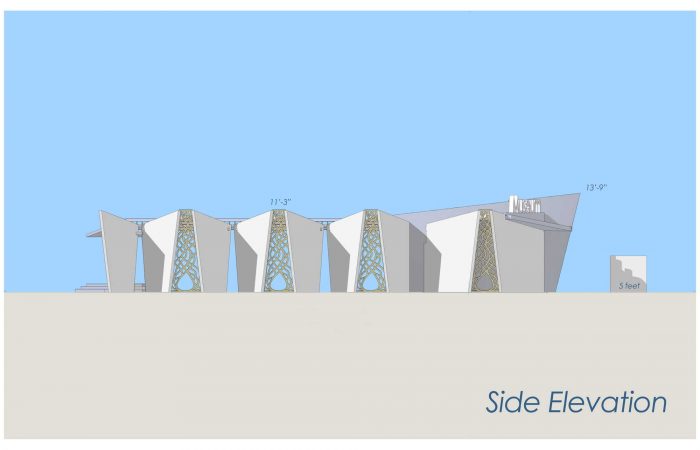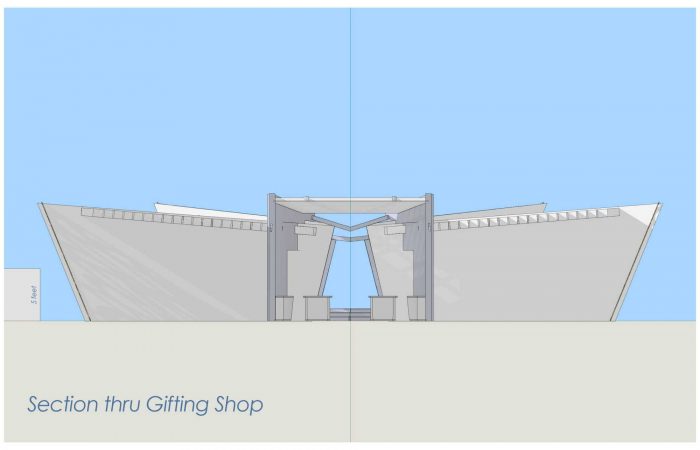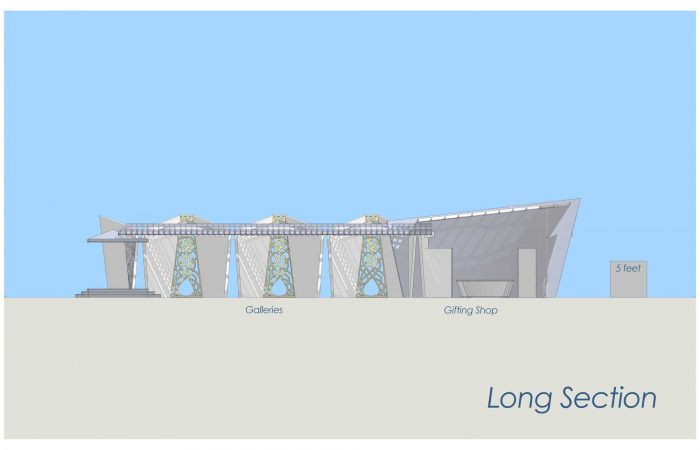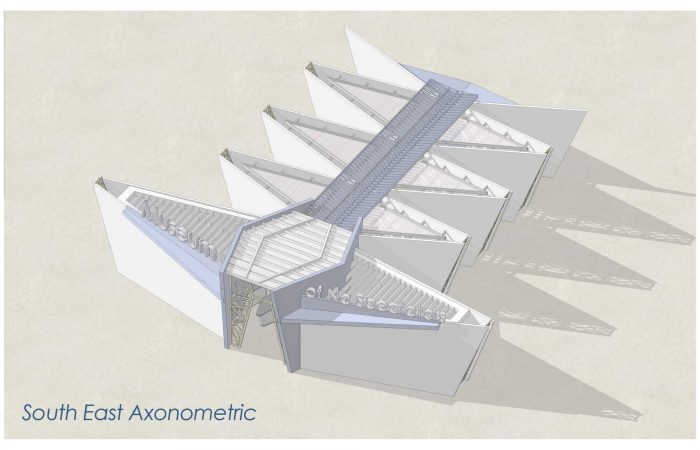在大流行病期间被推迟后,”无观众博物馆 “终于诞生了。这个不同类型的展示艺术的画廊空间的最初想法一直保持着由共同领导的艺术家约翰-马克思和J Absinthia Vermut最初构想的方式。无观众博物馆强调包容性,同时远离 “作为精英运动的艺术”。它挑战了博物馆是展示艺术家作品的中性空间的概念。尽管许多博物馆正在积极寻求改变,但许多博物馆仍然被认为是排他性的。 这些机构在艺术界的地位会让人难以摆脱 “博物馆级别的艺术 “凌驾于所有其他艺术之上的概念,然而,任何去过火人节的人都会知道,在博物馆的背景之外,正在创造着特殊而强大的作品,其中一些作品与社会产生了深刻的共鸣,重新定义了我们对艺术构成的看法。
The Museum of No Spectators has finally come to life, after having been postponed during the pandemic. The original idea for this different type of gallery space for displaying art has remained true to the way in which it was first conceived by co-lead artists John Marx and J Absinthia Vermut. The Museum of No Spectators emphasizes inclusivity while moving away from “art as an elitist sport”. It challenges the notion that museums are neutral spaces for exhibiting what artists do. Although many museums are actively seeking change, many are still perceived as being exclusive. The standing these institutions have in the art world can make it difficult to get away from the notion of “museum grade art” as being above all other art, yet anyone who has been to Burning Man will know that exceptional and powerful work is being created outside the museum context, some of it work that has a profound resonance with society, redefining our perception of what constitutes art.
作为一名建筑师,约翰-马克思希望我们重新思考艺术博物馆的概念。因此,在内华达州黑石城的尘土飞扬的周边,马克思和Vermut塑造了一个与众不同的博物馆。马克思描述了这个合作项目背后的想法:”作为一个活动,火人邀请你体验艺术,而不仅仅是你可能被动地欣赏的东西,而是作为一个释放你自己的创造潜力的联合企业。这就是为什么Absinthia和我认为,在playa上建立一个博物馆,鼓励所有的 “燃烧者 “在一个未经策划和自发的环境中制作艺术作品,是重新考虑博物馆的理想方式。它还提出了围绕文化包容范围的有趣问题,以及这可能对整个社会产生的影响。”
As an architect, John Marx wanted us to rethink the notion of art museums. So out on the dusty perimeter of Nevada’s Black Rock City, Marx and Vermut shaped a museum like no other. Marx describes the ideas behind this collaborative project, “Burning Man as an event invites you to experience art as not just something you might appreciate passively, but as a joint enterprise that unleashes your own creative potential. This is why Absinthia and I thought that a museum on the playa that encourages all ‘Burners’ to make works of art in an un-curated and spontaneous environment has been an ideal way to reconsider what museums can be. It also raises interesting questions around the Range of Cultural Inclusion and how this might impact society in general.”
没有观众的博物馆 “抓住了 “火人 “文化的完全参与性。这与默认的博物馆体验形成了鲜明的对比,即参观者通过大片的表演来 “消费 “艺术。在 “无观众博物馆”,参观者不再是一个消费者,而是进入一个具有根本包容性的空间,在这里,创作过程是与他人分享艺术的关键因素–这是一种内在的去商品化的体验。
The Museum of No Spectators picks up on the wholly participatory nature of Burning Man culture. This is in sharp contrast to the default museum experience of the visitor who “consumes” art through blockbuster shows. At The Museum of No Spectators, the visitor is no longer a consumer, but someone entering a radically inclusive space where the creative process is a key element in how the art is shared with others – an inherently de-commodifying experience.
马克思总结了这个艺术和建筑项目的设计理念:”当你走近这个耐人寻味的神秘建筑时,它有着形状奇特的画廊,看起来一部分是机器,一部分是生物,一部分是抽象和超现实主义的形式,它可能呈现为一块白板,有着广阔的外表,上面盘旋着’无观众博物馆’的字母。它的动态形状出现在另一个世界,但又接地气。它在等待你走近,成为它的一部分……参与其中。”
Marx summarises the design concept for the art and architecture project, “As you approach this intriguing and mysterious building with its unusually shaped galleries, appearing part machine, part creature, part abstract and surrealistic form, it may present as a blank slate, with an expansive exterior, the letters spelling ‘Museum of No Spectators’ hovering above. Its dynamic shapes emerge as otherworldly yet grounded. It is waiting for you to approach and to become a part of it . . . to participate.”
作为对班克斯对现代博物馆强调 “从礼品店出去 “的批判,”无观众博物馆 “是一项去商品化的研究,参与者将从 “礼品店 “进入,在这里我们改变了 “商店 “一词的用法,意味着 “制造 “而不是 “购买”。 在这里,”燃烧者 “被鼓励在进入主博物馆之前,将自己当场创作的艺术品作为礼物。在这个新型的博物馆里,随着 “燃烧者 “的到来和离开,艺术也在不断变化,每个人都能发挥他们作为艺术家的潜力。在活动周期间,艺术继续发展,”燃烧者 “通过增加或减少现有的作品,彻底地自我表达。
As a counter to Banksy’s critique of modern museums’ emphasis on “exiting thru the gift shop”, Museum of No Spectators is a study in decommodification, participants will enter through the “Gifting Shop”, where we have changed the use of the word “shop” to mean “to make” instead of “to buy”. Here ‘Burners’ have been encouraged to make a gift of their own art created on the spot before proceeding into the main museum. In this new type of museum, the art has changed constantly as ‘Burners’ have come and gone, each able to fulfill their potential as an artist. During Event Week, art continued to develop with ‘Burners’ radically self-expressing themselves by adding to or subtracting from existing pieces.
J Absinthia Vermut讲述了这个项目的背景:”没有观众的博物馆是在约翰和我谈论奥克兰艺术博物馆的燃烧人展览时产生的。我参加了展览,并喜欢看墙上的艺术作品,但由于我住在奥克兰并参加了这么久的火人节,我知道很多艺术家都没有被包括在内。从礼品店出来,我看到了我在草原上得到的礼物,把它们商品化并不符合火人的原则。走在博物馆里,看着别人的艺术,这就是观看的定义。这没关系,因为我们不是在火人节。但如果我们是呢?那会是什么样子?”
J Absinthia Vermut recounts the background to the project, “The Museum of No Spectators came about as John and I were talking about the Burning Man exhibit at the Oakland Museum of the Arts. I had attended and loved seeing the art on the walls but, having lived in Oakland and attended Burning Man as long as I have, I knew a lot of artists were not included. Exiting through the gift shop where I saw items I had been gifted on the playa, commodifying them just didn’t align with Burning Man principles. Walking through a museum and looking at someone else’s art was the definition of spectating. Which was okay, because we were not at Burning Man. But what if we were? What would that look like?”
在今年8月28日至9月5日举行的 “火人 “活动中,由30名志愿者组成的团队用管状钢架和铝Dibond板建造的1400平方英尺的博物馆回答了这个问题。2020年,设计团队开发了一个互动数字版的无观众博物馆,作为Burning Man 2020数字活动系列的一部分。没有观众的博物馆是通过筹款活动实现的。
This question was answered in the 1400-square-foot Museum built of tube steel frames and aluminum Dibond panels by a team of 30 volunteers at this year’s Burning Man event held August 28th- September 5th. In 2020, the design team developed an interactive digital version of The Museum of No Spectators as part of Burning Man 2020’s digital events series. The Museum of No Spectators has been made possible as the result of a fundraising drive.
Architects: J Absinthia Vermut, John Marx
Area : 1400 ft²
Year : 2022
Photographs :Hannu Rytky, John Marx
Manufacturers : Dibond
City : Black Rock City
Country : United States

